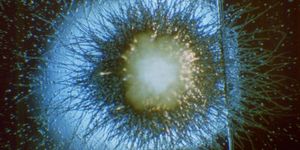New Achondroplasia Treatment
A recent clinical trial study found that an experimental drug, known as vosoritide, can be a potential treatment for achondroplasia (a common type of child dwarfism).
"This drug is like releasing the handbrake on a car, it lets you get up to full speed instead of having to drive with the brakes on,” says MCRI clinical geneticist Professor Ravi Savarirayan.
Achondroplasia results in the over activity of a protein FGFR3 that negatively impacts bone growth. Currently treatments involve surgical interventions in comparison—vosoritide can me potentially be a molecular therapy targeting the origins of the disease without invasiveness.
Professor Savarirayan said, "We know that beyond the cold hard facts and figures around growth rates and bone biology, we have hope that a treatment can improve kids' health outcomes, social functioning and increase access to their environments. Anecdotally, our patients tell us they now are able to do more stuff like climbing trees, jumping rocks and being more independent generally, which is specific to their experiences."
Learn more about Achondroplasia:
https://www.youtube.com/watch?v=gt-SAjuikLM
Findings were published in the medical journal, The Lancet and describes how Vosoritide works by blocking FGFR3 activity and returning bone growth to normal.
Dr. Johnathon Day, the Medical Director of Clinical Science at BioMarin Pharmaceutical Inc. notes, "Vosoritide is the first potential precision pharmacological therapy that addresses the underlying cause of achondroplasia and this randomized, double-blind, placebo-controlled Phase 3 study further adds to the scientific knowledge we've gained over many years from the clinical development program. I'd like to personally thank and congratulate all of the investigators and I am especially grateful to all of the children and their families who have participated in these studies.”
Source: Science Daily









